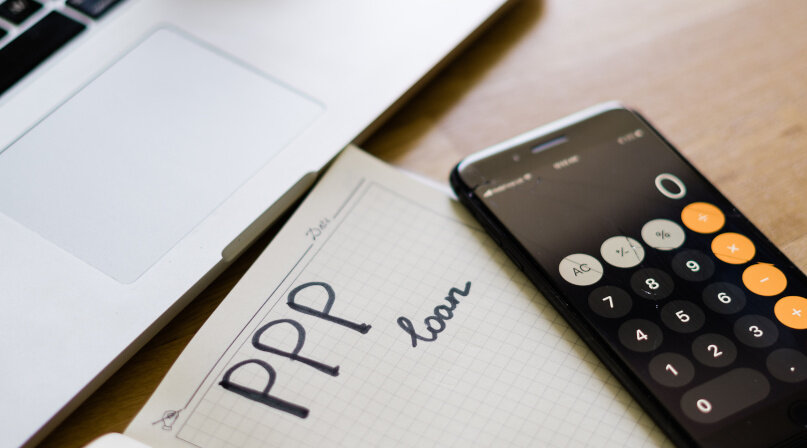The Paycheck Protection Program (PPP) was a $953-billion business loan program that was established in 2020 with the Coronavirus Aid, Relief, and Economic Security Act (CARES Act); this program was designed to assist certain businesses, self-employed individuals, sole proprietors, certain nonprofit organizations, and tribal businesses with the costs of payroll, rent, mortgage interest, and utilities during the pandemic. In 2021, considering that the pandemic is still a prevalent issue in the U.S., the Small Business Administration has re-opened the Paycheck Protection Program to small businesses that meet certain criteria - but do you qualify?
Regardless if you’re looking to apply for your first PPP Loan, need to apply for forgiveness, or you’re an entrepreneur that’s been there and done that and are ready to apply for the second round of funding, we’ve got you covered in this article!
The Basics of the PPP Loan Round One
So, you haven’t applied and received funds for the first round of the Paycheck Protection Program loan? What are you waiting for? Let’s get you started!
FIRST THINGS FIRST - ARE YOU ELIGIBLE?
In order to be eligible for the Paycheck Protection Program, you must be able to answer yes to the following questions:
Are you a small business, sole proprietor, independent contractor, self-employed person, 501(c)(3) nonprofit organization, 501(c)(19) veterans organization, or a tribal business?
Were you in operation as of February 15, 2020?
Do you have 500 or fewer employees?
Are you located in the United States?
Good news, if you answered yes to all of the above, you qualify to apply for the first round of the Paycheck Protection Program!
HOW IS YOUR LOAN AMOUNT DETERMINED?
The amount of your Paycheck Protection Program loan is based on your average monthly payroll cost - this includes salaries, wages, commissions, cash tips, paid leave, severance pay, and other compensation (health benefits, insurance, etc.) paid to employees and are limited to $100,000 annually per employee. Keep in mind that although payroll costs include the employee’s portion of the taxes that are withheld from their paycheck, payroll costs used to apply for the loan do NOT include the employer’s portion of social security, Medicare, or federal and state unemployment taxes.
Run your payroll report for the period of January 1, 2019, through December 31, 2019, take the total amount of gross wages and divide it by 12 - the resulting number will be your average monthly payroll cost.
Your loan amount is equal to 2.5 times the average monthly payroll costs - that’s it, no complicated analysis of your financial statements or spending hours with a banker!
READY TO APPLY? MAKE SURE YOU KNOW WHAT THE LOAN CAN BE USED FOR - THERE ARE STIPULATIONS!
The PPP loans, IF you would like to eventually have the loan forgiven, can only be used for certain items during a 24 week period (by the way, that 24 week period starts from the time that the funds are deposited in to your account so be ready with a plan). The loan proceeds can be used for the following IF you want to have a shot at having your loan forgiven:
Payroll costs (gross wages only, not to exceed $100,000 annually for an employee)
Costs related to the continuation of group health care benefits during period of paid sick, medical, or family leave, and insurance premiums
Payments of interest on any mortgage obligation
Rent
Utilities
Interest on any other debt obligations what were incurred before February 15, 2020
IF MY LOAN ISN’T FORGIVEN, WHAT’S THE FINE PRINT?
For any amount that is not forgiven, the initial terms is two years - this can be extended by the lender if needed.
The interest rate is 1%.
There are zero loan fees.
There are zero prepayment fees.
SOUNDS TOO GOOD TO BE TRUE - WHERE DO I APPLY?
Contact your bank today or try Lender Match through the U.S. Small Business Administration.
Don’t Forget To Apply For Forgiveness!
If you used at least 60% of your loan for payroll costs during the 24 week period and you maintained the number of employees on your payroll, you can apply for loan forgiveness - but don’t delay!
Each lending institution is different in regards to the amount of documentation they will request, however it’s always good to be prepared with the following:
Total Payroll Costs for the 24 week covered period
Form 941 Employer’s Quarterly Federal Tax Return for the quarters that your 24 week period covered
Form RT-6 Florida Department of Revenue Employer’s Quarterly Report for the quarters that your 24 week period covered.
If the total gross wages on your payroll report for the 24 week covered period is greater than your PPP loan amount, you can stop here - if it’s not, then you’ll need the following:
Proof of Rent payments (cleared checks, banks statements, etc.)
Proof of Utility payments (cleared checks, bank statements, online receipts, etc.)
Proof of Interest payments (cleared checks, bank statements, payment allocation receipt, etc.)
THERE ARE THREE FORMS - WHICH ONE DO i USE?
There are three PPP loan forgiveness application forms available from the SBA and each form is for a different loan use circumstance. Follow the diagram below to find which form is best for you:
But wait - there’s a Round Two!
The Consolidated Appropriations Act 2021 included a second round of funding for the Paycheck Protection Program intended to assist business owners who continue to be impacted by the pandemic.
ARE YOU ELIGIBLE?
The same rules apply for round two as they did for round one with the exception of two additional stipulations - you must have 300 or fewer employees AND you must have suffered a 25% decrease in any quarter’s revenue from 2019 to 2020.
HOW IS YOUR LOAN AMOUNT DETERMINED?
The loan amount is determined by the same method that was used for the first round - 2.5 times your average cost for payroll last year. The only difference in the second round is that if your business is categorized as a code 72 by the NAICS, you are eligible to receive 3.5 times your average payroll costs!
WHAT CAN I USE ROUND TWO PROCEEDS FOR?
Although the second round of fund proceeds can be used for the same items as round one (payroll costs, rent, utilities, etc.), this time they’ve included four additional categories of covered expenses:
Operational Expenses: For cloud computing, HR, and accounting software.
Property Damage Costs: For damages caused by public disturbances in 2020 that were not covered by your business insurance.
Supplier Costs: For payments made to suppliers before taking the PPP loan that was essential for keeping your business running.
Worker Protection Costs: For PPE and other investments made to abide by local and federal COVID-19 business guidelines.
As many small business owners have had to rethink their operations during the pandemic, understanding the new PPP loan has been a top priority for the team at My Corporate Office. If you need assistance understanding if you qualify for round two or even applying for your first draw, we’d be delighted to work together in an effort to move your business forward.
Edith DeCourcy
CEO of My Corporate Office of FL, LLC
An experienced Chief Financial Officer since 2009, Edith has a demonstrated history of working in the construction, service, manufacturing, and retail industries. Skilled in Workflow Operations, Growth Management, Risk Management, and Organizational Development, she has a knack for reorganizing small businesses to increase their bottom-line. She is an Accredited Small Business Consultant that utilizes The SEMP (Simple Examination to Management Profitability) Approach to develop partnerships within the community.











